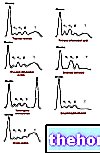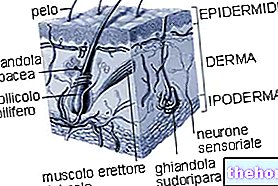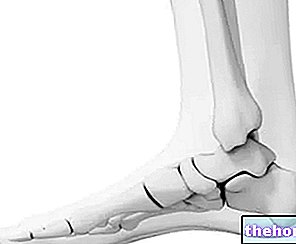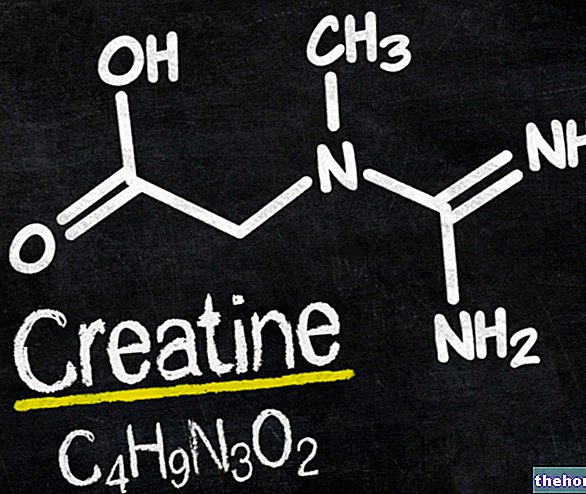«Solar radiation
The dermis is the middle layer of the skin, between the hypodermis and the epidermis. Unlike the latter, from which it is separated from the basement membrane, the dermis is richly vascularized and innervated.

The dermis performs functions of mechanical and metabolic support towards the epidermis, to which it transfers nutrients and sebum, an oil-based substance that protects the surface layer of the skin from bacteria and dehydration. It has a wavy shape due to the presence of dermal papillae, protrusions that they have the purpose of inserting themselves in the crests present in the overlying epidermal layer. This particular anatomical conformation has the purpose of increasing the adherence between the two layers and favoring metabolic exchanges.
From the histological point of view, the dermis is a connective tissue formed by fibrous glycoproteins immersed in a fundamental substance.Inside there are different types of cells, hair follicles and the typical glands of the skin.
The dermis can be divided into two portions. The most superficial layer, called adventitial, is rich in cells; in the deeper one, called reticular, fibers prevail.
In the dermis, three components can be distinguished: cells, fibers and the fundamental (or amorphous) substance that fills the spaces left free by the fibers and dermal cells.
CELLS: fibroblasts are the most abundant cells in the dermis and are responsible for the synthesis of fibers and components of the fundamental substance.
In addition to fibroblasts there are also mast cells, cells that contain many granules rich in heparin (anticoagulant agent) and histamine (mediator of inflammatory reactions).
The dermis is also populated by blood cells such as macrophages, granulocytes and lymphocytes. The presence of these cells in the dermis increases during inflammatory states. In particular, macrophages derive from blood monocytes which, after exiting the capillaries, take on an appearance similar to fibroblasts and are called histiocytes. When an inflammatory process is underway, the histiocytes increase in size and acquire the ability to incorporate foreign particles and necrotic material (phagocytosis). In this case, the histiocytes are called macrophages, which belong to the family of cells presenting antigens and play a leading role in the immune response.
The dermis performs important metabolic, immunological, thermoregulatory and sensitive functions, as well as supporting. In fact, at this level we find important structures, such as the sweat and sebaceous glands, the roots and hair bulbs, the erector muscles of the hair and a dense network of capillaries.
BASIC SUBSTANCE: it consists of glucosaminoglycans (GAG). These are polysaccharides made up of long chains of disaccharides, in which at least one of the two units is an amino sugar (glucosamine or galactosamine).
The best known glucosaminoglycans are hyaluronic acid and heparin. These and other substances belonging to this family have the ability to retain a lot of water, forming a gel.
A gel is a state in which a dispersed phase and a dispersing phase coexist. In the specific case, the glucosaminoglycan molecules (dispersed phase) form a sort of lattice between which water is contained (dispersing phase).
At the level of the dermis, this gel occupies most of the extracellular space and is responsible for skin turgor. Glucosaminoglycans are rather rigid molecules that do not fold, consequently they take on rather extended conformations (called random coils) and occupy an exaggerated volume compared to their mass.
In the dermis, all the glucosaminoglycans present, except hyaluronic acid, bind in large numbers to a single filamentous protein (from the core or core protein), forming proteoglycans.
Many proteoglycans bind on a hyaluronic acid core forming aggregates of enormous size:

FIBERS: the main ones are those of collagen. Collagen is an extremely complex glycoprotein organized in large fibrous bundles and, in addition to being the most abundant protein in the body, it alone accounts for 70% of proteins in the skin.
Collagen has a supporting function and confers considerable mechanical resistance to the dermis. In the most superficial layer, called adventitial, there are also thinner collagen fibers, called reticular.
In addition to collagen fibers, there is a small amount of elastic fibers in the dermis which, taken together, represent only 2% of skin proteins. They consist of elastin which gives the skin a certain degree of elasticity, which is essential both to allow facial expressions and to follow the numerous variations in body size that occur over the course of life.
The elastin molecules are joined by transverse bridges, thanks to which they form a "wide network that gives the skin a fair degree of elasticity. Skin distension is however limited by the presence of collagen fibers mixed with elastic ones. However, there are cases in which where the stretching of the skin is so pronounced as to cause the breakage of collagen fibers: a classic example is given by pregnancy stretch marks.
Hypodermis "




























